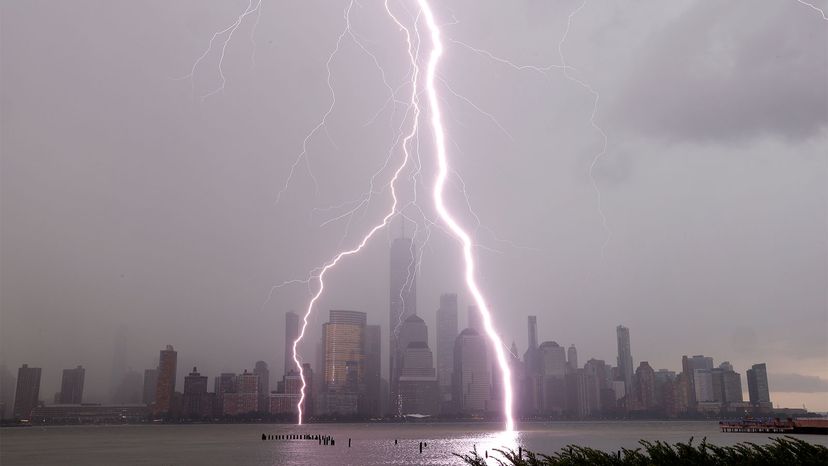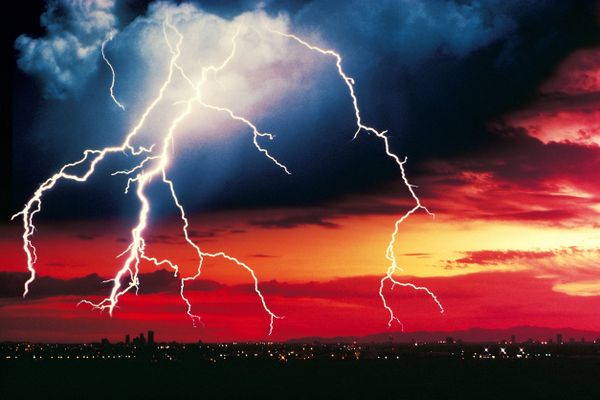Air Ionization

As the difference between the charges in the bottom of the cloud and the earth below it builds up, the first stage of lightning begins.
When the electric field becomes very strong (on the order of tens of thousands of volts per inch), conditions are ripe for the air to begin breaking down. The electric field causes the surrounding air to become separated into positive ions and electrons — the air is ionized. Keep in mind that the ionization does not mean that there is more negative charge (electrons) or more positive charge (positive atomic nuclei / positive ions) than before. This ionization only means that the electrons and positive ions are farther apart than they were in their original atomic structure.
Advertisement
The importance of this separation is that the electrons are now free to move much more easily than they could before the separation. So this ionized air (also known as plasma) is much more conductive than the previous non-ionized air.
These electrons have excellent mobility, allowing for electrical current to flow. The ionization of air or gas creates plasma with conductive properties similar to that of metals. Plasma is the tool nature wields to neutralize charge separation in an electric field. Those readers who are familiar with the chemical reaction of fire will recall that oxidation plays an important role. Oxidation is the process by which an atom or molecule loses an electron when combined with oxygen. Simply put, the atom or molecule is changed from a lower positive potential to a higher positive potential. Interestingly enough, the process of ionization, which creates plasma, also occurs through the loss of electrons. By this comparison, we can view the ionization process as "burning a path" through the air for the lightning to follow, much like digging a tunnel through a mountain for a train to follow.
After the ionization process, the path between the cloud and the earth begins to form. Learn about stepped leaders, or paths of ionized air, next.
